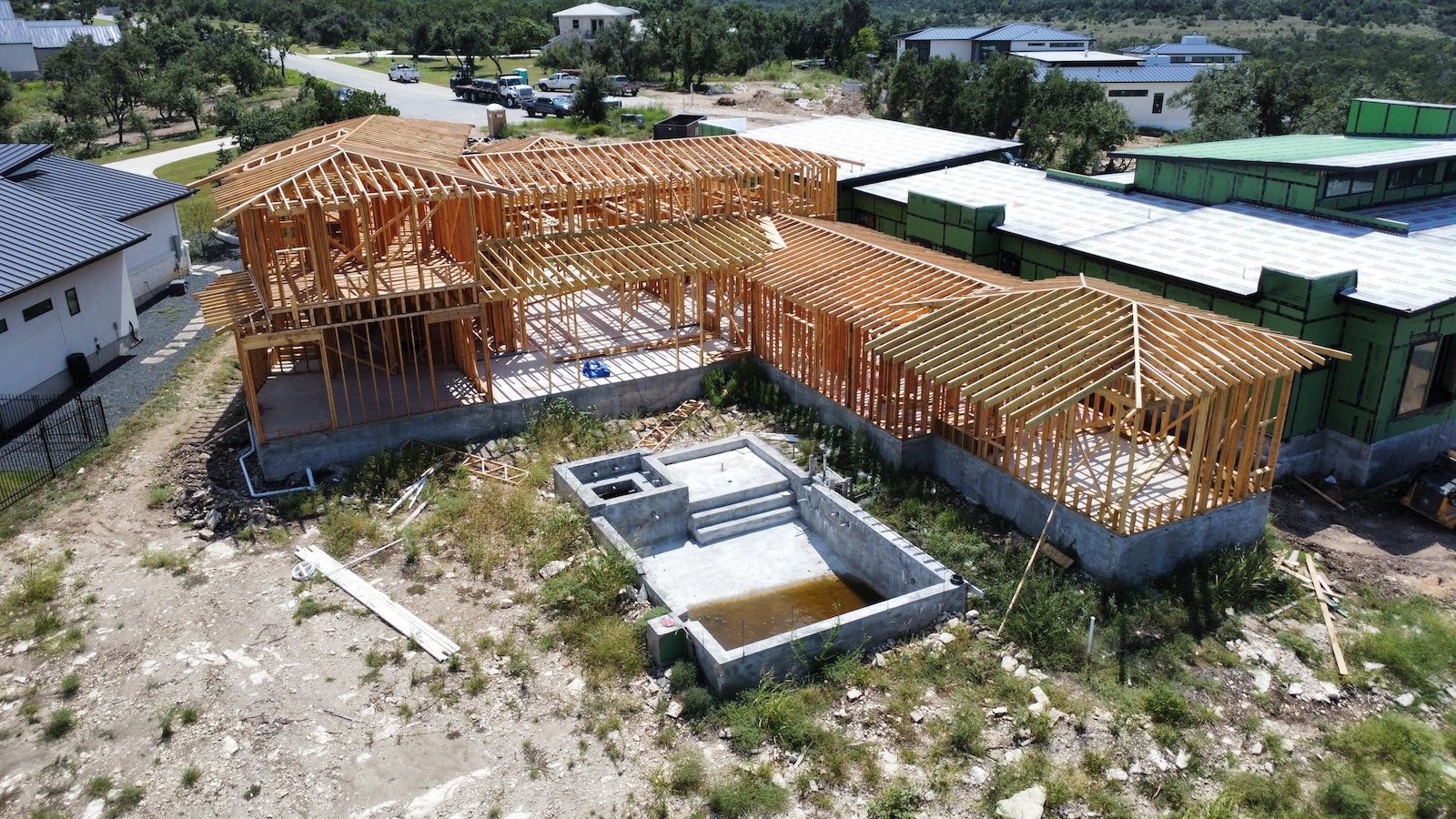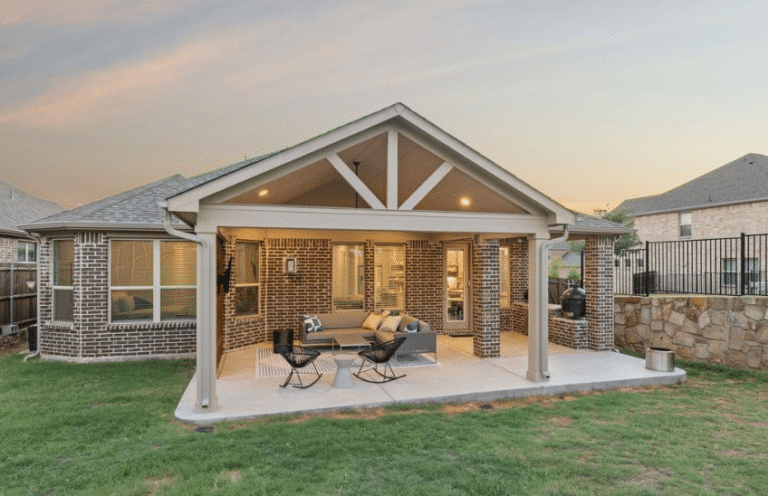How Much Does It Cost to Frame a House in 2024?
Framing is one of the most crucial stages in building a house, as it forms the skeleton that supports the roof, walls, and floors. Understanding the cost to frame a house can be essential for budgeting a construction project, whether you’re building a new residential home, adding a detached garage, or working on a commercial construction project. This article will explore the average cost, labor costs, material costs, and other key factors that influence the total framing expenses.
Average Cost to Frame a House in Austin, Texas
The average cost to frame a house typically falls between $7 and $16 per square foot, depending on various factors. For an average-sized home (about 2,000 square feet), the total framing costs can range from $14,000 to $32,000. However, this number can vary significantly based on the size of the house, the framing materials used, and the complexity of the roof framing and wall framing.
Cost Breakdown Per Square Foot
Here’s a rough estimate of framing costs based on square footage:
- 1,500-square-foot house: $10,500 – $24,000
- 2,000-square-foot house: $14,000 – $32,000
- 3,000-square-foot house: $21,000 – $48,000
Keep in mind, larger homes or houses with complex roof designs or custom designs may have higher costs.
Key Factors Affecting Framing Costs
Several factors influence how much it costs to frame a house. Some of the most important ones include:
Type of Framing Project
Whether you’re framing a new home, a multi-story home, or a 750-square-foot addition, the type of framing project will greatly impact the cost of framing.
- Full-house framing: This includes everything from floor joists to roof trusses and usually costs more than smaller projects like a garage or an addition.
- Garage framing: A detached garage typically costs less to frame because of its smaller size and less complex layout.
- Complex additions: Projects like adding a second story to an existing home require more materials, labor, and structural support, resulting in higher framing costs.
Project Size
The size of the construction project is one of the biggest cost factors. Larger homes will naturally require more materials and labor, increasing the overall cost. For example, a 3,000-square-foot house will be much more expensive to frame than a 1,500-square-foot house due to the extra feet of lumber, nails, and construction materials.
Material Costs
The type of framing material used plays a major role in framing costs. Most homes are framed using dimensional lumber, but some homeowners may opt for steel framing or even concrete framing for added durability or specific design preferences.
- Lumber costs: Lumber is the most common material for residential framing. The cost of lumber can vary, especially due to fluctuations in domestic steel prices and market demand. Lumber prices typically range from $3 to $6 per linear foot.
- Steel framing: While steel frames offer more durability and resistance to weathering, they cost significantly more than wood, ranging from $9 to $12 per square foot.
- Concrete forms: Concrete may be used for certain load-bearing walls or foundation types. Concrete framing is more commonly seen in commercial buildings but can also be used in homes.
Labor Costs
Labor costs for framing generally account for about 30-50% of the overall construction costs. The national average cost of labor to frame a house ranges from $5 to $10 per square foot, depending on the complexity of the project, location, and availability of skilled framers.
For example, framing a simple one-story house with basic wall and roof trusses may only cost around $5 per square foot, but complex projects such as two-story homes or houses with vaulted ceilings will require more skilled labor, driving up the costs to $10 or more per square foot.
Types of House Framing
Traditional Wood Framing
The most common type of house framing in the U.S. is wood framing, made with dimensional lumber like 2x4s or 2x6s. It’s often used in residential buildings and is suitable for framing exterior walls, interior walls, and roof frames.
Steel Framing
Steel framing is less common but can be found in both commercial framing projects and some residential framing costs. It is more durable than wood, though more expensive. The cost of installation for steel framing tends to be higher due to specialized labor and materials.
A-Frame Houses
An A-frame house or A-frame home is a popular design choice for its distinctive triangular shape and ability to shed snow and rain efficiently. The cost of framing an A-frame home may differ due to its unique design and the need for additional support in certain areas.
Additional Costs to Consider
When calculating the overall cost for framing, it’s essential to take into account several additional costs:
Roof Framing
The roof framing process involves installing roof trusses or roof joists, which provide structural integrity to the roof. Depending on the roof design and materials, roof framing can cost anywhere from $7,000 to $12,000 for an average-sized home.
Wall Framing
The cost to frame a wall depends on whether the wall is load-bearing or not. Load-bearing walls require additional support and materials, increasing the total cost. The cost to frame a wall can range from $1,000 to $4,000, depending on the wall’s size, location, and materials.
Foundation Costs
A home’s foundation is critical for its overall stability. While not technically part of the framing process, foundation costs are still a significant expense to consider. The type of foundation (e.g., concrete walls or concrete blocks) can impact the cost of the entire project.
How to Estimate Framing Costs
For an accurate cost estimate, consider using a Cost Calculator or consulting with a structural engineer who can assess your building plan and give a more precise cost estimate based on your specific needs. Here’s a step-by-step guide to get started:
- Determine Project Size: The size of your framing project will directly impact your costs. Calculate the total square footage and linear footage for the walls, roof, and floors.
- Select Materials: Decide between dimensional lumber, steel framing, or another material. Keep an eye on lumber prices and other building materials to ensure you get the most accurate cost.
- Labor Costs: Get quotes from local contractors or framing specialists to determine the cost of labor.
- Plan for Additional Costs: Don’t forget extra materials, potential demolition costs, and any project costs related to complex designs.
How Labor Costs Affect Framing
It’s essential to note that the cost of labor can fluctuate based on location and project complexity. For example, framing jobs in urban areas or places with high living expenses may come with a labor rate of $10 per square foot or more. In contrast, rural areas might see labor costs as low as $5 per square foot.
Commercial vs. Residential Framing Costs
The framing costs for commercial buildings are often higher than those for residential framing projects due to the larger size and more stringent regulations associated with commercial construction. A typical commercial framing job can cost anywhere from $15 to $30 per square foot, depending on the materials used and the project’s complexity.
Using a Cost Estimator
To get a more accurate estimate of how much it will cost to frame a house, it’s helpful to use our Cost Calculator below. This tool allows you to input key details such as square footage, material type, and labor costs to generate a personalized estimate.
Cost Calculator to Frame a House
Total Estimated Cost: $0
Cost Breakdown When You Frame a House
Here’s an approximate breakdown of how framing costs are typically split.
Responsive Pie Chart
This chart provides a simplified view of how expenses are divided, giving you as homeowners a better idea of where your money is going.
Ready to Build Your Dream Home? Contact Us for a Custom Quote!
Framing a house is a significant expense, but understanding the cost factors, material costs, and labor costs involved can help you create an accurate estimate and plan your budget accordingly.
Whether you’re building a small one-story house or a large multi-story home, careful planning and selecting the right materials will help ensure your project stays within your budget.
The best way to have the most accurate and relevant estimate is to contact us at LV Design & Build. We know the business and have been serving customers for 25 years.







